Since the introduction of the Gutenberg Editor, working with WordPress has become interesting. You have a clean editor with easy-to-use blocks that allow creating advanced web page elements.
What makes it even more interesting are the dynamic Gutenberg blocks that allow you to add WordPress dynamic content.
If you don’t know about the dynamic content Gutenberg offers in WordPress, then after reading this post, you will. Furthermore, through this, learn how you can use Gutenberg dynamic blocks and create highly functional pages, posts, and templates.
If you are ready, let’s start with what dynamic content is in WordPress.
What is WordPress Dynamic Content?
Dynamic content in WordPress isn’t a new concept. It’s been here for a long time, even before the Gutenberg block editor arrived. WordPress users have been using it through core WordPress fundamentals as well as page builders like Elementor or Divi.
WordPress dynamic content is that type of content that gets pulled from the database and showcased to the user based on certain conditions or parameters provided.
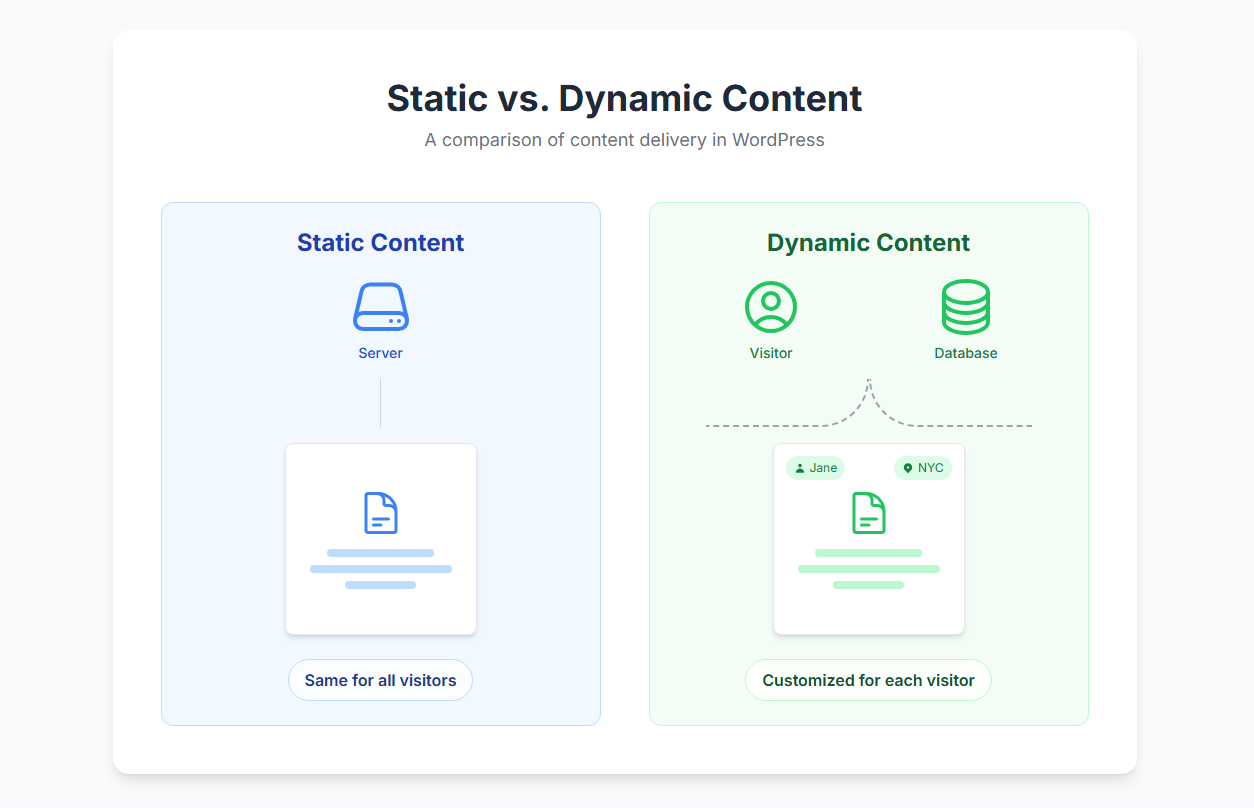
Unlike static or fixed content, website owners don’t add dynamic content manually; instead, it changes based on changes occurring in the conditions or parameters provided. You can say, based on:
- Who is visiting or using the site
- Their location
- What information is in the database
The content will be different every time, unlike static content, where everything is fixed once added. You only need to define the conditions through which the dynamic content will be generated, pulled, or displayed.
For example, you set parameters to display the post name in a particular location. Now, when the user selects a different post, the name will change every time. Through dynamic content, you can enable personalization, scalability, and an interactive experience for the user on your WordPress site.
Some examples of WordPress dynamic content:
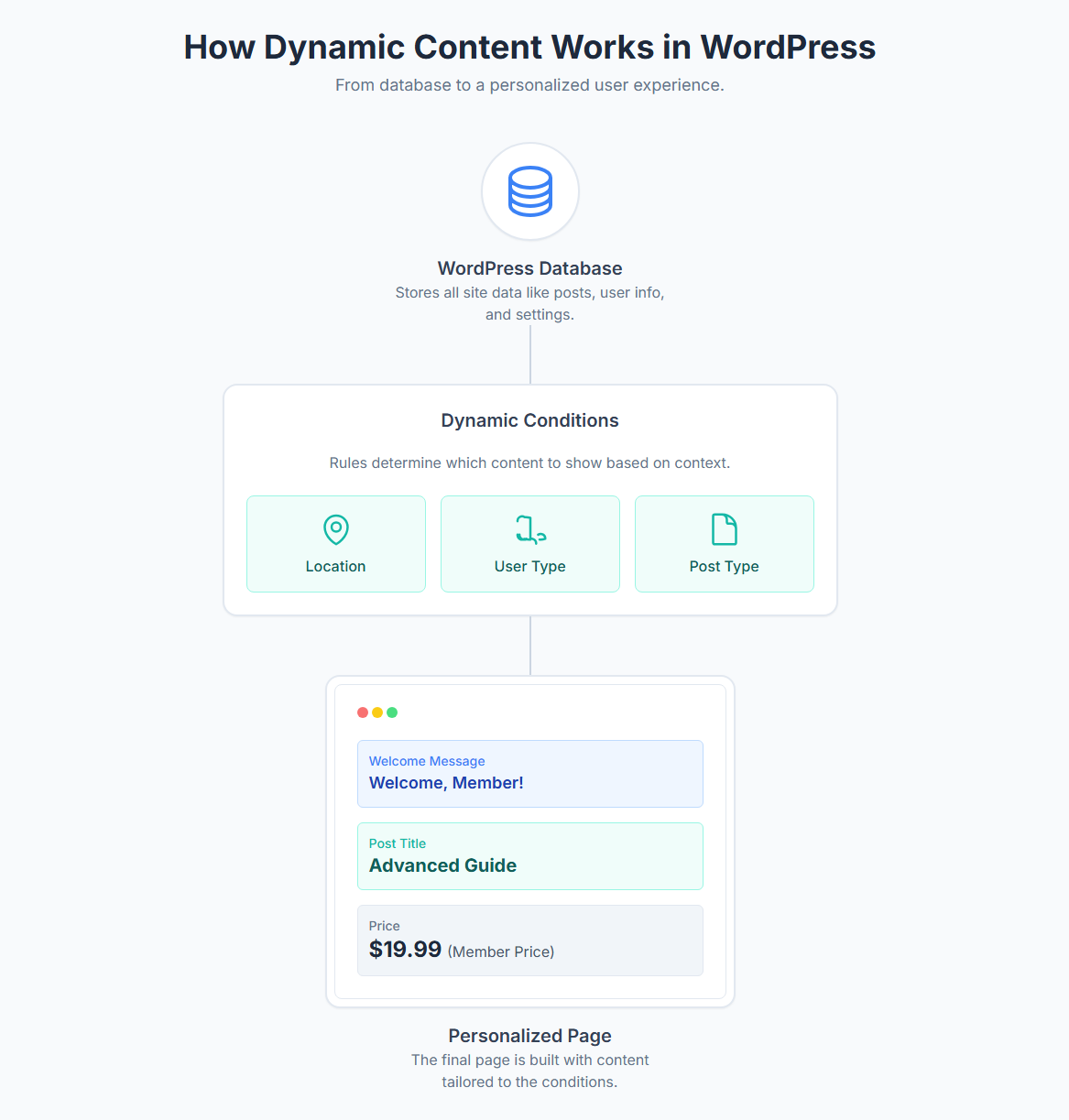
- A new blog post automatically appears on the blog page.
- For different users logging in to the website, a personalized message is displayed.
- Product pages that use the same layout but have content such as price, name, and thumbnail that change based on the product selected.
By using dynamic content, it becomes easier to present different information to different users at the same time. It saves you time by eliminating the need to design or create a new page for each post or product.
Hence, using WordPress dynamic content is one of the best ways to grow your site without changing your layout each time.
What is the Best Way to Display Dynamic Content in WordPress Using Gutenberg?
If you are using the Gutenberg WordPress block editor and don’t want to get involved in the coding part, the best way to display dynamic content in WordPress is with the Dynamic Blocks.
Yes, WordPress Dynamic Content blocks of the Gutenberg editor make it possible without any complex processes.
But what are those? Let’s find that out as well.
What is a Dynamic Block in WordPress Gutenberg Editor?
As you already know, the Gutenberg editor, in order to function or create webpage elements, uses Blocks—those square-shaped elements in the Gutenberg editor for various types of web creation needs. That’s why it is also known as the WordPress Block editor.
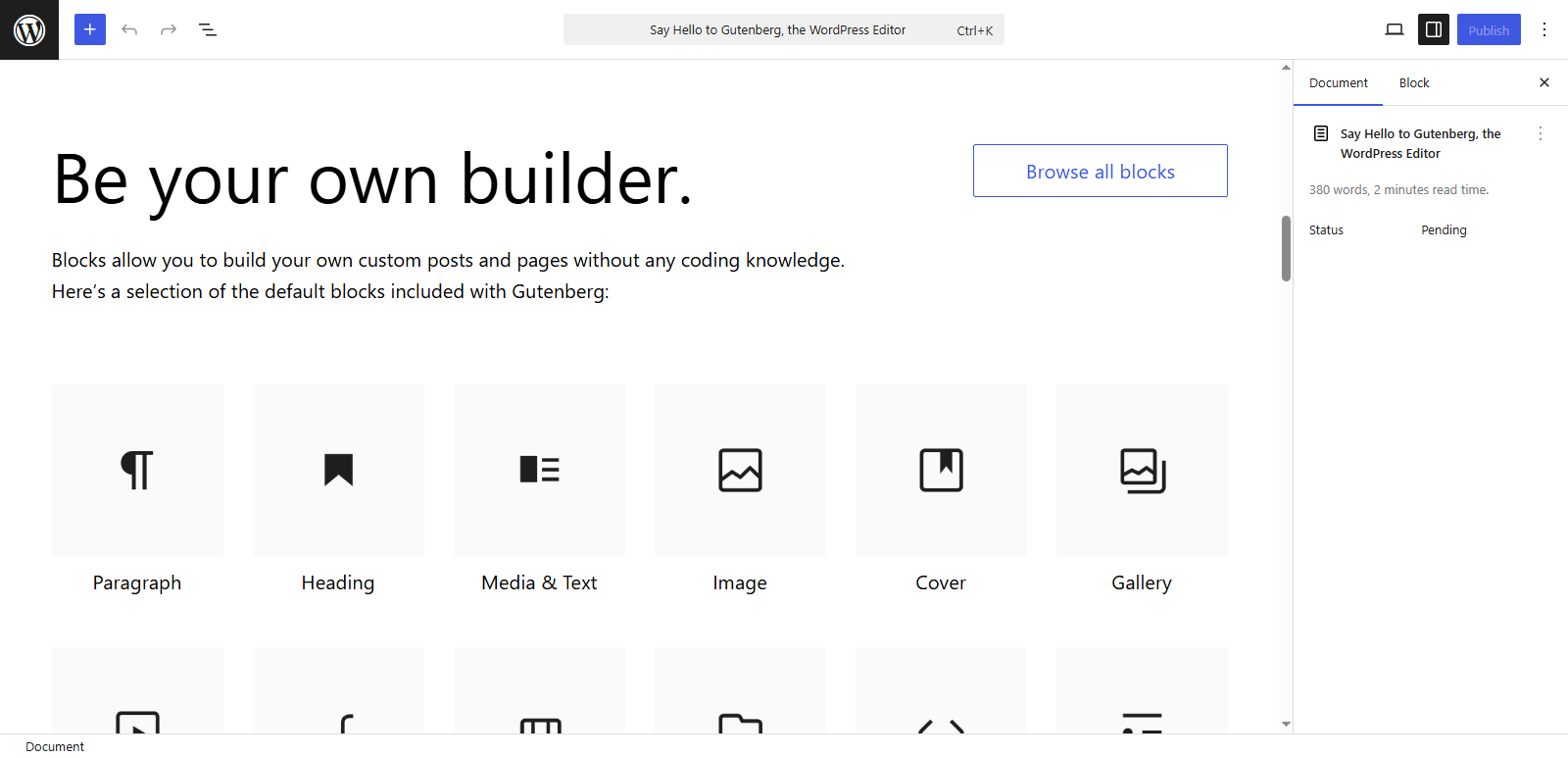
You pick one block, place it on the editor, define your content, and publish.
That’s how you and everyone mostly use the Gutenberg blocks.
To enable WordPress to display dynamic content, Gutenberg provides you with Dynamic blocks that make it possible to use dynamic content in WordPress.
WordPress Static vs Dynamic Blocks
The difference between WordPress Gutenberg Dynamic blocks and Static blocks is simple.
When you use static blocks, you need to provide the value, and it will be fixed. WordPress saves the content and showcases it to the visitor without changing it. The user’s location and role don’t bring any change.
What you’ve added will be as it is for all the users.
For instance, you add a Heading block. Now, whatever text you add to this block will be displayed for this heading, and it won’t change unless you make an update.
However, with Dynamic blocks, the case is different.
Once added to the page, the information users will access depends on:
- Their location
- Their role
- Type of information they have requested
The dynamic Gutenberg blocks change the content automatically without your intervention.
For example, you add the Site Title dynamic text block to a post.
Now, that post will display the real-time value of the site title whenever you access the post. But the moment you change the title, the block on that post will start to reflect the newly defined title.
That’s how the Dynamic Gutenberg blocks work in WordPress.
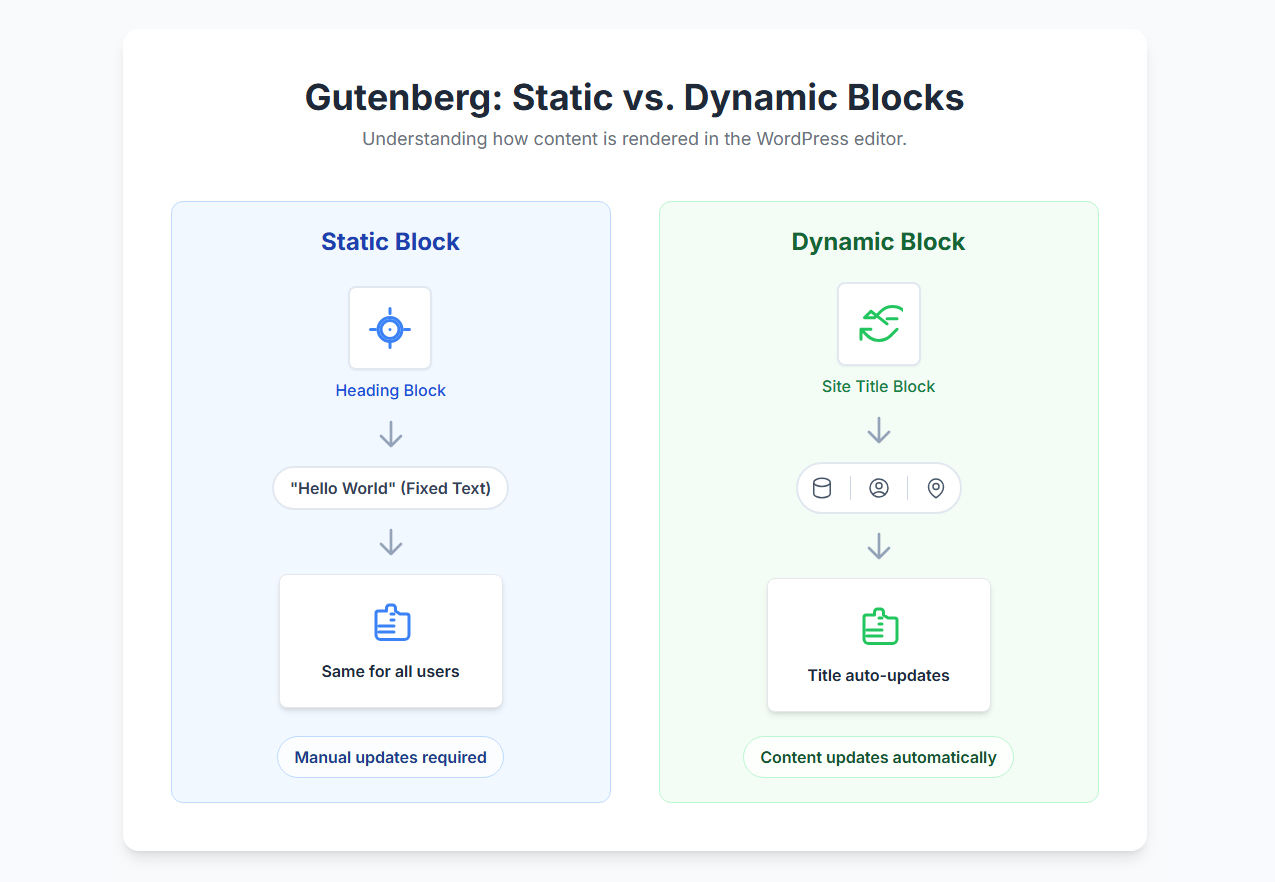
How Many Dynamic Blocks Are There?
As of June 2025, there are a total of 30 dynamic blocks for WordPress in the Gutenberg editor. Each has multiple options and functionality to effectively use WordPress dynamic content.
Why Use Dynamic Blocks on Your WordPress Site?
The #1 reason why you should use Dynamic blocks in WordPress is that they are built-in. You don’t have to install any dynamic content WordPress plugin for that. Second, they are easy to use and are available inside the Gutenberg editor.
Hence, you can use and customize them effectively.
Lastly, Dynamic blocks are based on the core fundamentals of WordPress and Gutenberg. Therefore, when you use them, you don’t face any performance issues.
Methods to Display WordPress Dynamic Content Using Dynamic Gutenberg Blocks
To display WordPress dynamic content using Gutenberg dynamic content blocks, you have two methods:
- Inside a post or page
- Using a template
Both methods are effective, but the requirements are different. Using dynamic content inside a post or page is needed when you want to display WordPress global variables, for example, the website’s name or navigation menu.
The use of dynamic content in a template is required when you want to keep the same layout for all the posts and pages, or even categories.
In this way, you can utilize the WordPress dynamic content as well as dynamic Gutenberg blocks, in a much efficient way.
Now, let’s see how we can do that.
Method 1: Using Posts or Pages
To use Dynamic Gutenberg blocks in posts or pages, first, go to Posts/Pages, then click Add New. (Add Page/Post)
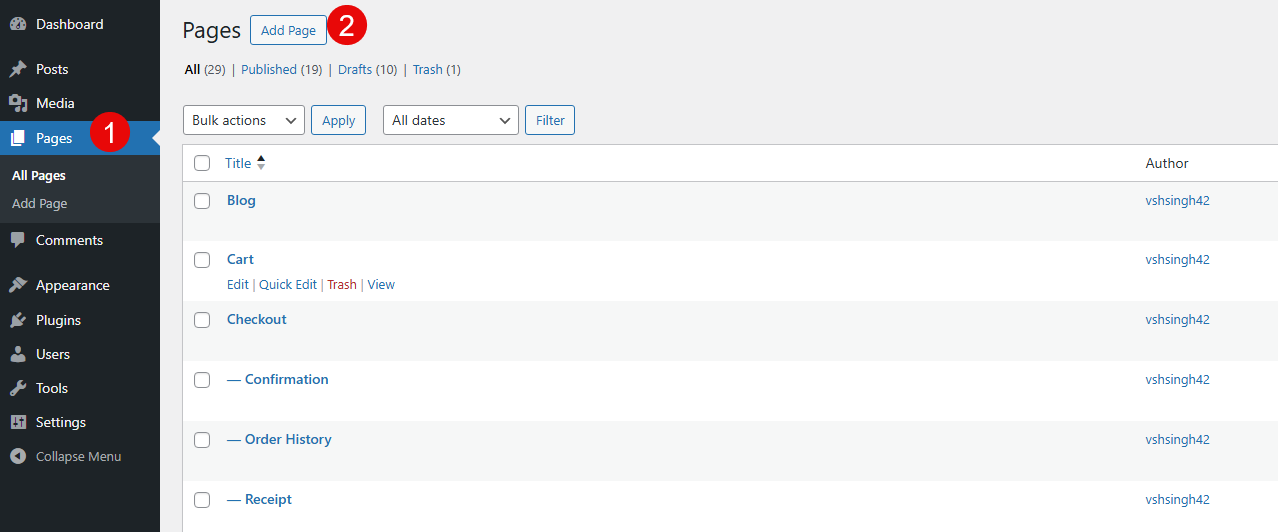
A pop-up will appear to choose the pattern; simply close it. Then, add your page/post title and then click on the ‘+’ button. Scroll down to the Widgets section. Here, you get the following dynamic Gutenberg blocks:
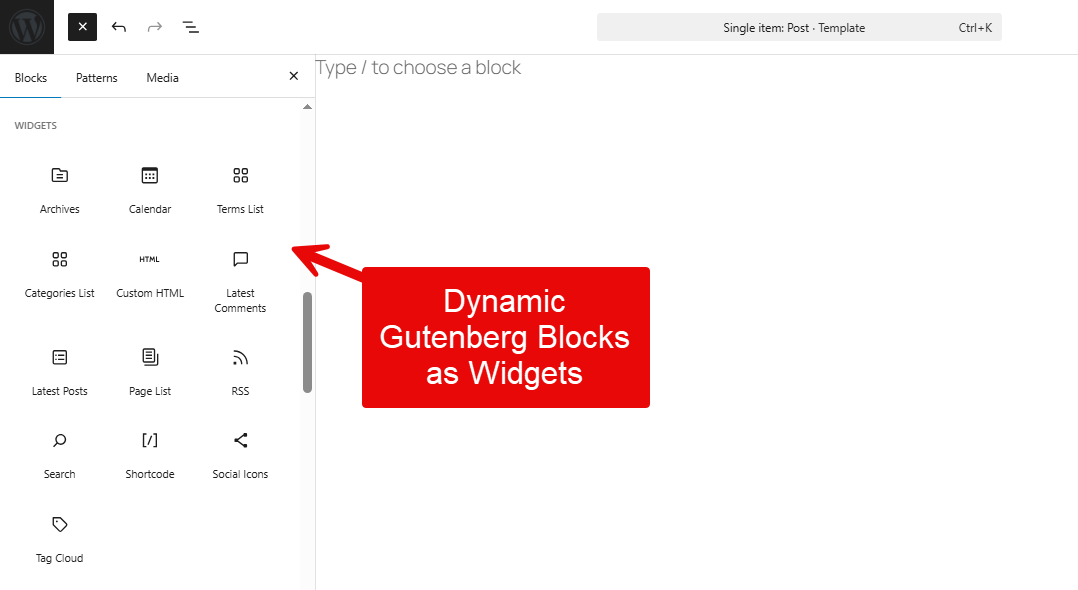
- Archives: Use this dynamic block to display the date archive of posts.
- Calendar: Use this block to display a calendar with dates of published posts.
- Terms List: With this block, you can display all the terms related to a particular category.
- Categories List: It shows all the categories.
- Latest Comments: Display all the comments received recently.
- Latest Posts: This dynamic Gutenberg block lists all the posts published in various orders.
- Page List: It works just like the Latest Posts block, but for pages.
- RSS: Use it to display an RSS feed from another URL.
- Tag Cloud: Show all the categories or tags used.
Then, after this, you have the Theme section. In this, you get the following WordPress dynamic blocks for Gutenberg:
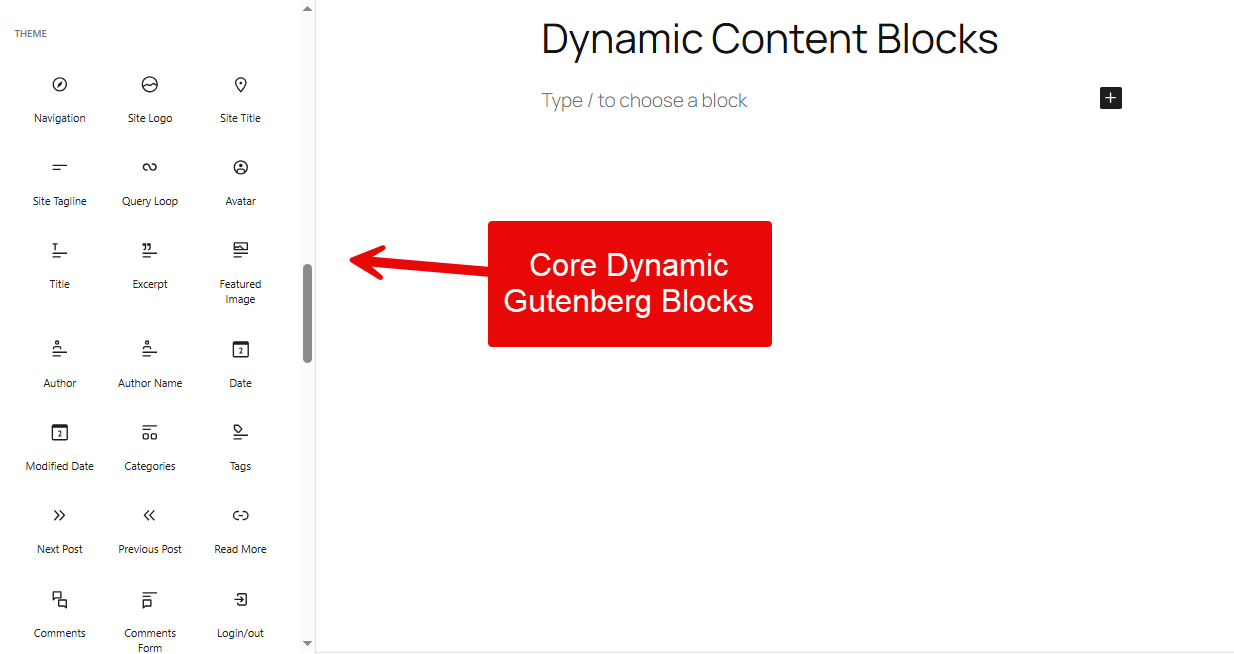
- Navigation: This dynamic block adds navigation to the page.
- Site Logo: Use it to display the website’s logo.
- Site Title: Use this block to display the website’s title.
- Avatar: This allows you to add a user’s avatar.
- Title: By using this block, you can render the title of the selected post, page, or any other content type.
- Site Tagline: Use this Gutenberg dynamic block to display the website tagline.
- Query Loop: With this block, you can display post types based on various parameters and configurations.
- Excerpt: Show post excerpt.
- Featured Image: Show post/page’s featured image
- Author: Using this block, you display all the details of the author with an avatar.
- Author Name: Show name of the post author only.
- Date: Using this block, you can display the published date of the post.
- Modified Date: Using this block, you can display the modified date of the post.
- Categories: Showcase all the categories assigned to the post/page.
- Tags: Showcase all the tags assigned to the post/page.
- Comments: Show all the post comments with visual configurations.
- Term Description: Use this block to display the categories or tags description.
- Archive Title: This dynamic block for Gutenberg adds the category/tags page title.
- Search Results Title: Show Search Results page title based on search query
- Author Biography: Use this block to display the biography of the post/page author.
In addition to these, there’s another Theme dynamic block that is Content.
Using all of these blocks, you can display your desired dynamic content in WordPress. You simply have to insert them on the page. Then, using the Block settings in the right sidebar, customize their appearance as well as their functionality.
Method 2: Using Templates in WordPress
The second method to use WordPress Dynamic Gutenberg blocks is to access the new WordPress editor and create a template. So, for that, go to Appearance → Editor.
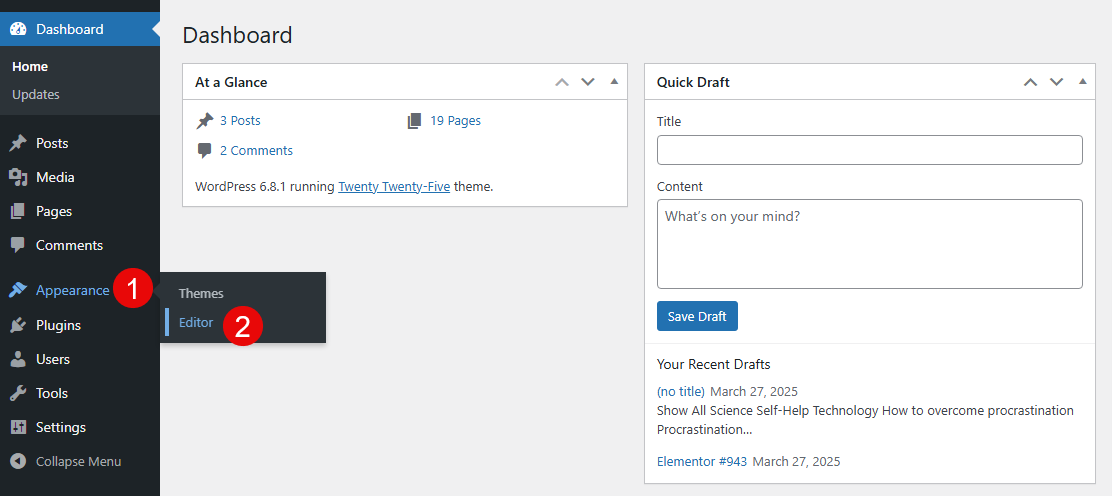
Then, click on the Add Template button.
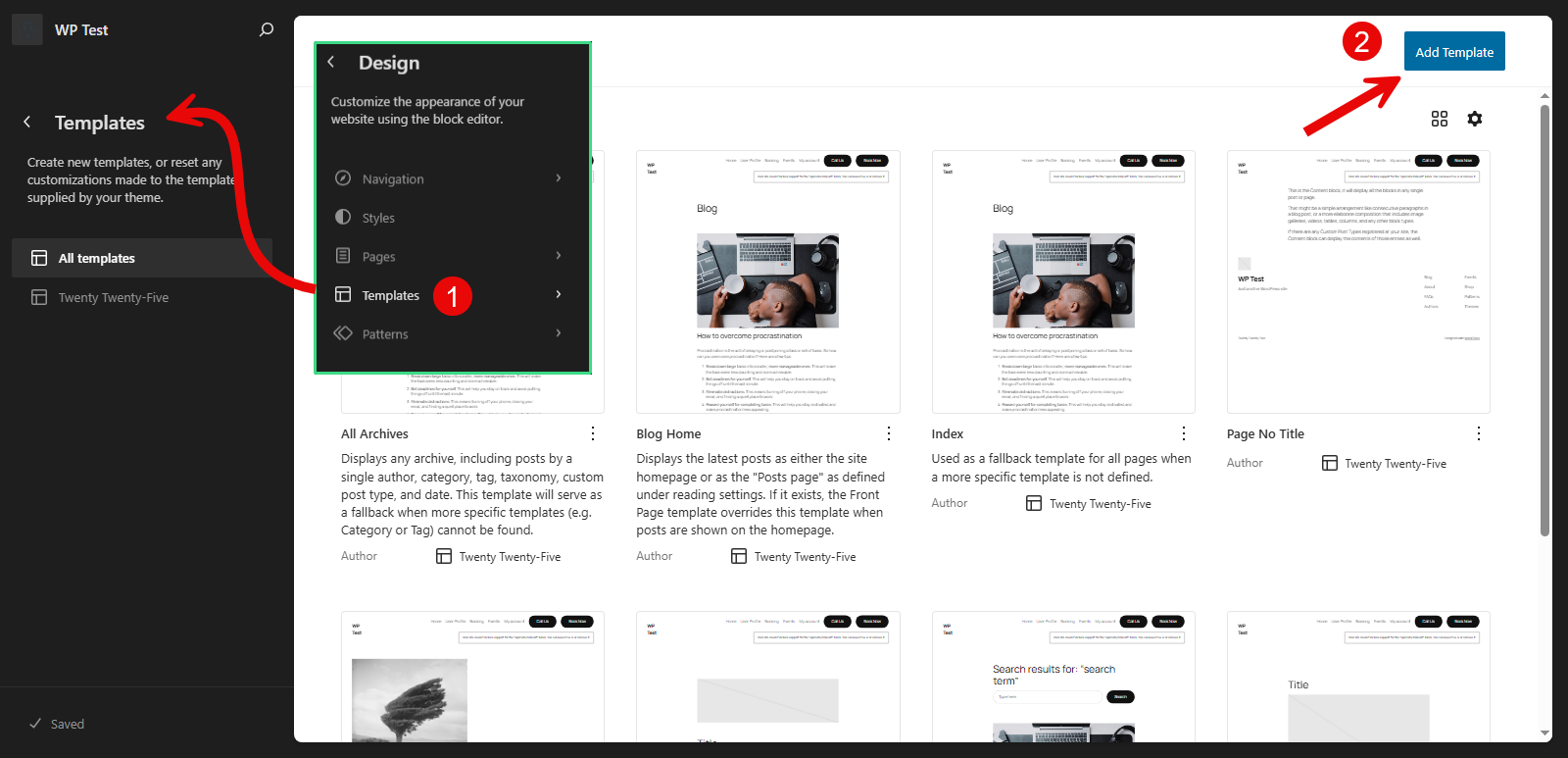
A pop-up will appear where you need to select the location for which you are creating the template. For this tutorial, I have selected Single item: Post.
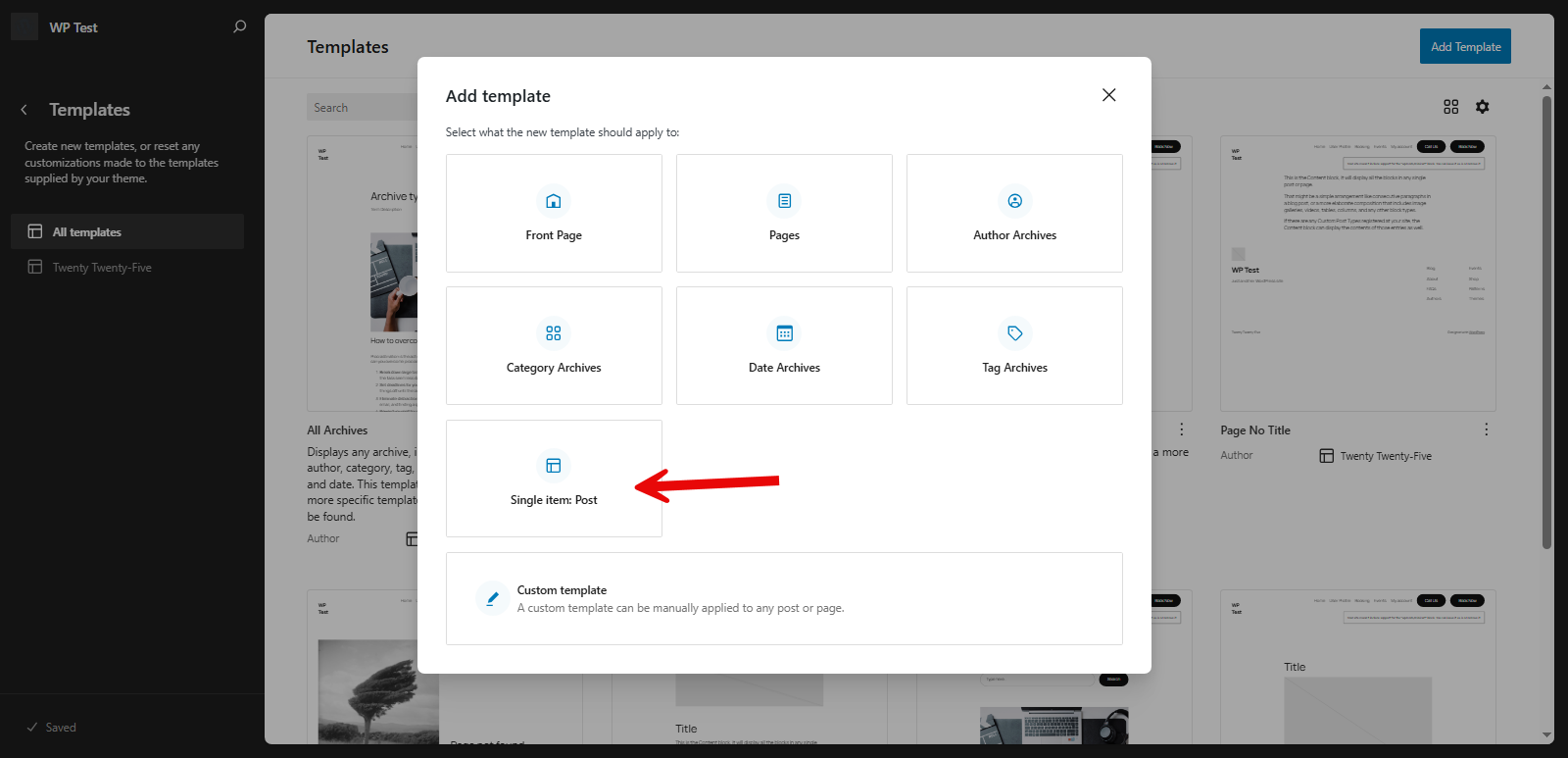
Then, further select All Posts.
Now, you will get the same editor canvas, where you need to insert the desired blocks. You will get the same dynamic blocks in the templates editor as well. However, whatever you add here will reflect on all the posts.
If you add a Title dynamic Gutenberg block, then it will display the post title in the same manner you configure it, for all posts. Likewise, if you add the Featured Image block before the post content, then all posts will reflect this particular layout.
Using dynamic blocks in templates is all about setting the layout for different types of content you publish.
Whatever you set here will reflect for the whole type you have selected.
Final Words
If you have reached the end, it means you’ve improved your knowledge about WordPress dynamic content, dynamic blocks, and the ways you can utilize them.
There are various other methods to use WordPress dynamic content; however, Gutenberg dynamic blocks are the easiest one. You don’t have to install anything, and you don’t have to worry about the performance. Whatever you need is right there in the Gutenerg editor.
Hence, a perfect way to add and create dynamic content in WordPress.
Now, it’s your turn to utilize dynamic Gutenberg blocks and make your website more informative, interactive, and interesting. Furthermore, if you need to improve your Gutenberg editor experience, you can try the advanced blocks available in the free Gutenberg WordPress plugin, WPMozo Blocks and Addons.
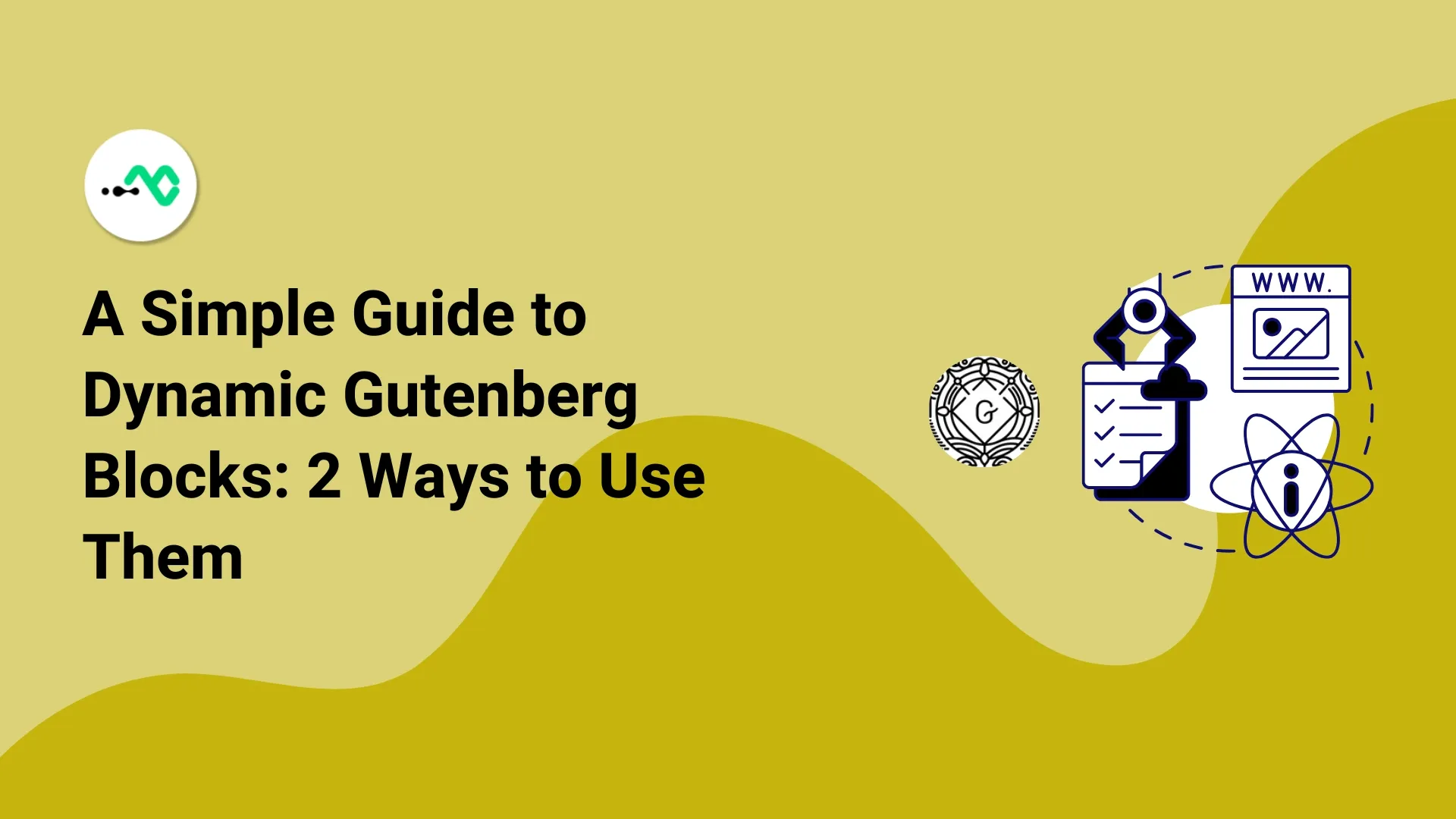
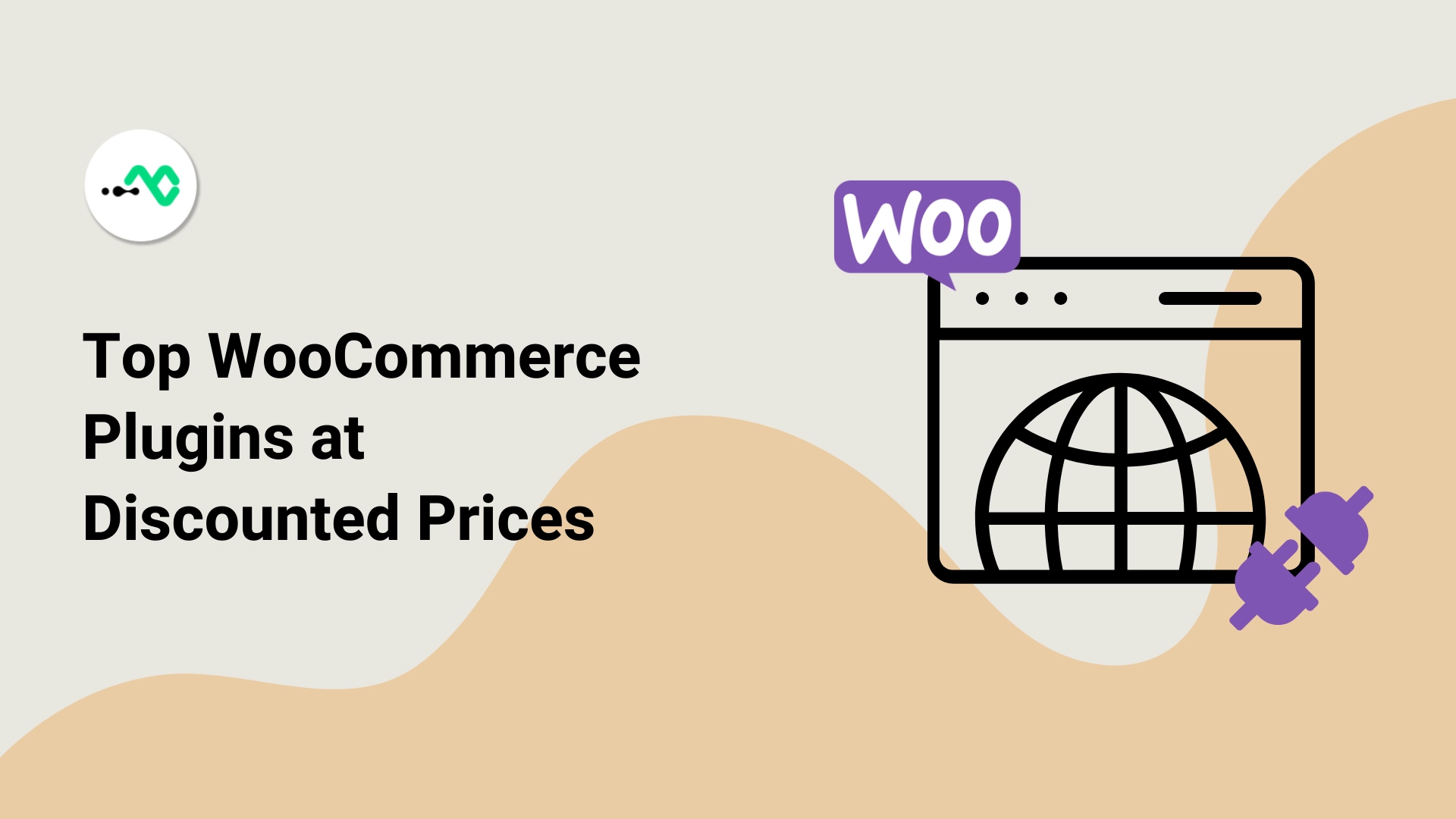





0 Comments